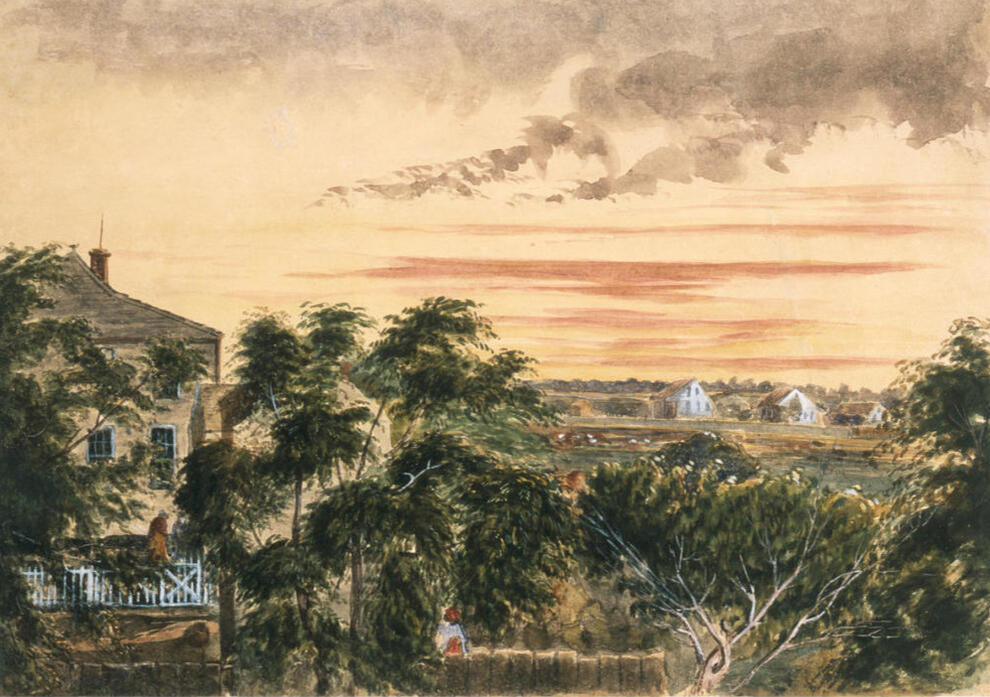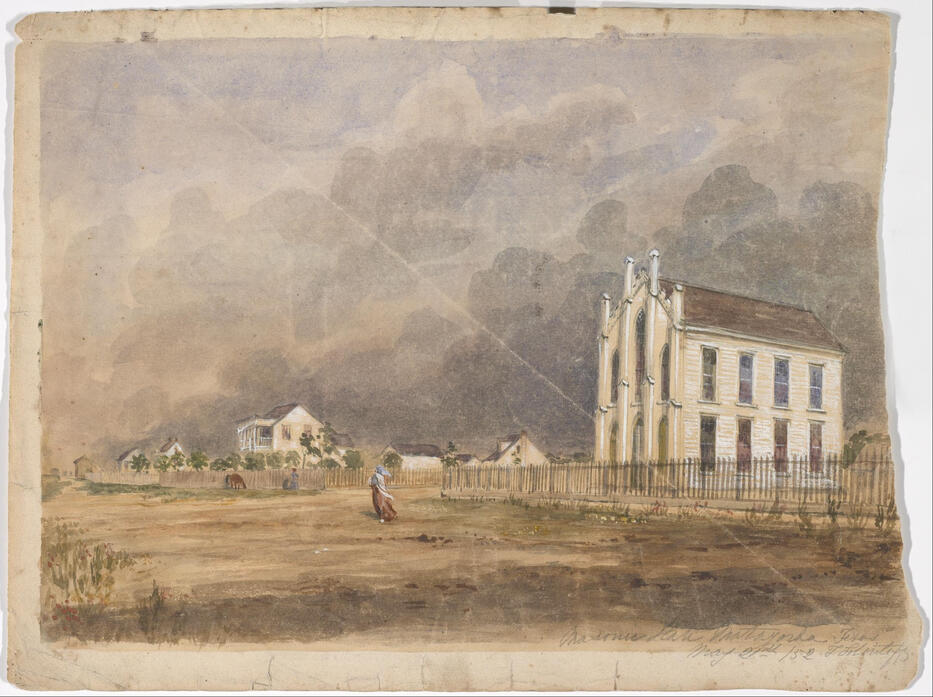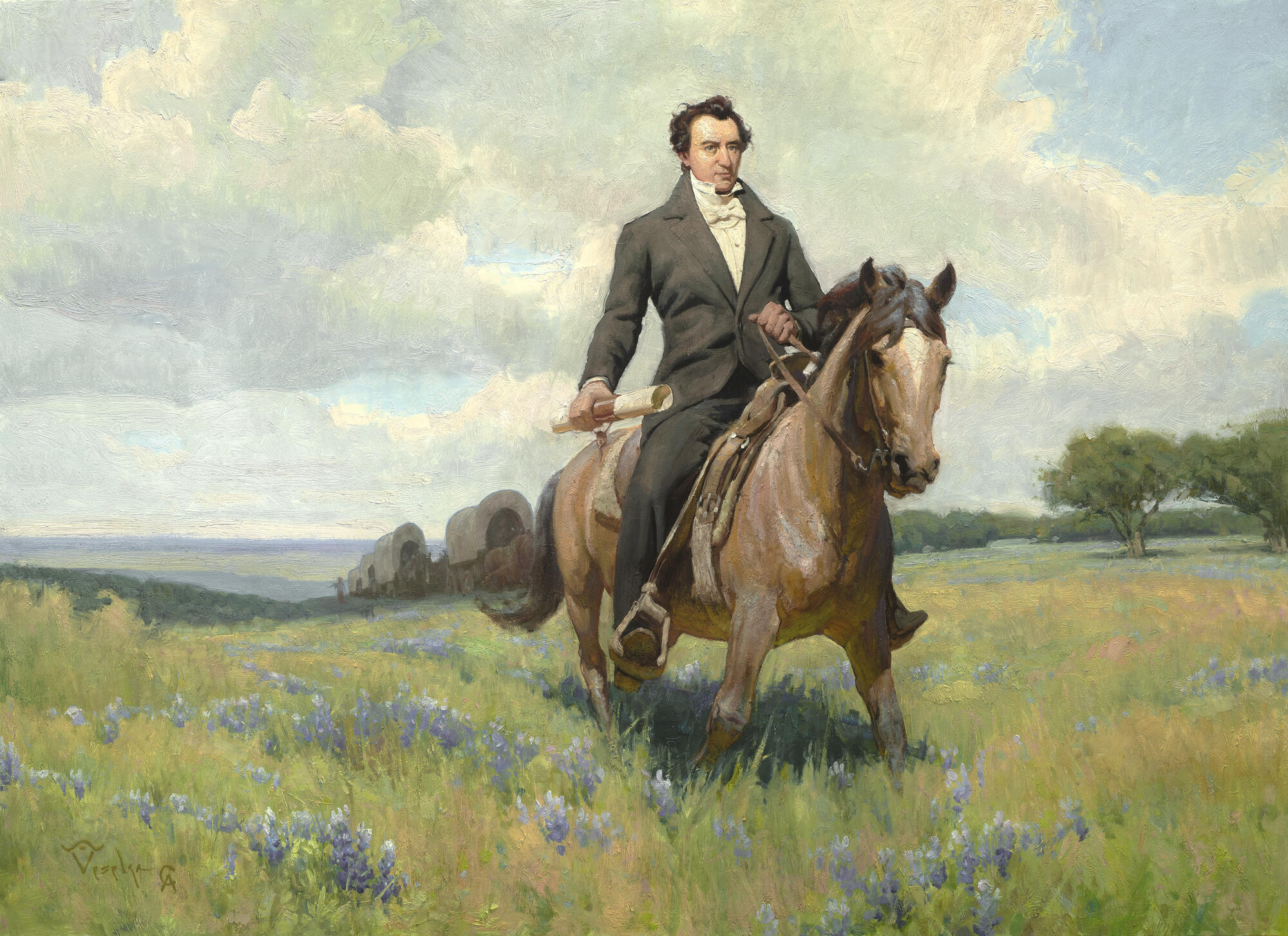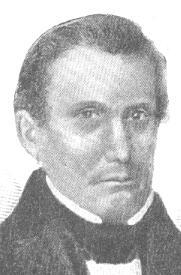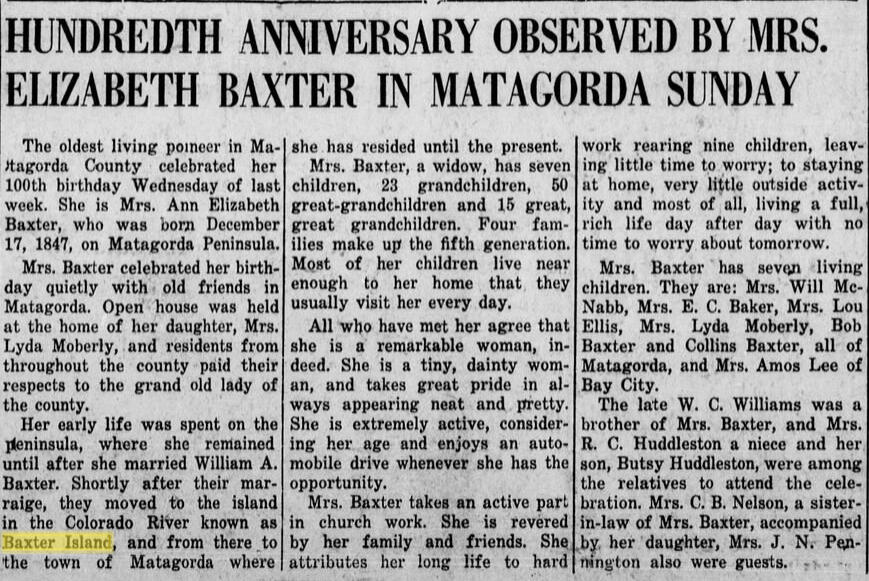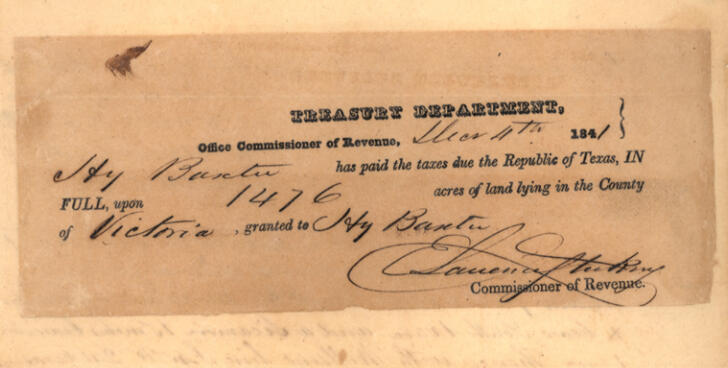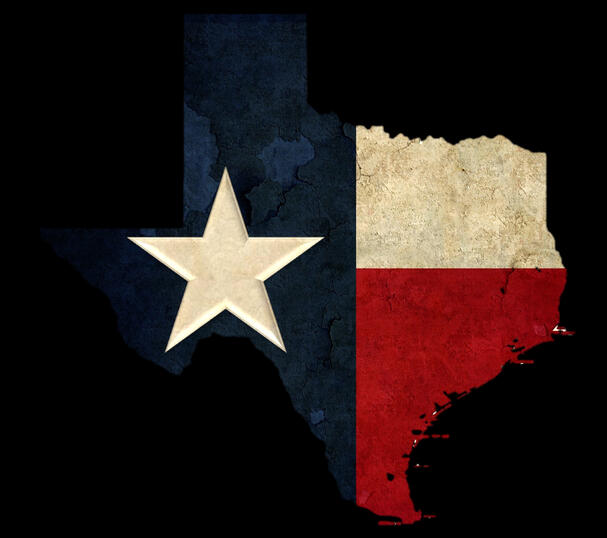Baxter Island
MATAGORDA - TEXAS
Welcome Islanders!
Baxter Island, Texas is located at the mouth of the Colorado River and Matagorda Bay. The island has a fascinating history deeply intertwined with the settlement of the region, European exploration, and the diverse wildlife that calls it home.
200 Years
Coming Soon!
The Events, Battles, and people that have shaped Baxter Island.
Lets talk!
Send texts and voice mail messages to: 512-222-3067 or you can use the online form below.
Lets talk!
Send texts and voice mail messages to: 512-222-3067 or you can use the online form below.
Name: Baxter Island
Category: Texas physical, cultural and historic features
Class: Island
Location: Mouth of the Colorado River, Matagorda County, Tx.Coordinates:
Lat: 28 41 00 N degrees minutes
Lat: 28.6833 decimal degrees
Long: 095 59 00 W degrees minutes
Long: -95.9833 decimal degrees

Baxter Island is part of Stephen F. Austin's Mexican land grant, surveyed by Elias R. Wightman.
Welcome to BaxterIsland.com, a collection of historical documents and narratives about Baxter Island, located at the mouth of the Colorado River and Matagorda Bay. This strategic location has served as a vital landing point for early European explorers and continues to be integral to the history of Texas.
This site is dedicated to preserving and sharing the island's rich past, exploring its role in the state's development. Here, you'll find research on the island's connections to Stephen F. Austin's land grants, as well as the contributions of key figures like Elias R. Wightman, a surveyor instrumental in Matagorda's founding, and Reverend William P. Baxter, an early Texas pioneer, Texian volunteer, and the island’s namesake.Explore the captivating stories that shaped Baxter Island and its impact on the broader Texas frontier.
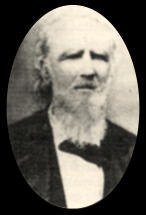
William P. Baxter
Reverend William P. Baxter, Texas pioneer, farmer and stockman, was born on February 19, 1809, in Manchester, England, and died on October 20, 1895.
William traveled from New Orleans aboard the schooner, the "Little Zoe" to the future townsite of Matagorda, Texas in Steven F. Austin's first colonies with Elias R. Whitman.
William owned Baxter Island which he deeded to his grandsons Robert and Henry, the sons of William A. and Ann Elizabeth Williams Baxter. The Island is still owned by the family today.
Esther Wightman Yeamans Baxter
Esther came to Texas with her parents, Asa and Jerusha Wightman Yeamans and her uncle Elias R. Wightman in Stephen F. Austin's first colony.Her name displays the bond of between the Baxter, Yeamans, and Wightman families. These families played pivitol roles in the Texas Revolution and early deveopment of Matagorda County.
William P. and Esther Baxter had twelve children: Caroline S., William A., Demis Mariah, Elias, Amanda D., Robert J., Alice B., Silas Dinsmore, Mary, Paul, Henry, and David Ross.
The Baxter family has a long and rich history in Texas, particularly in the Matagorda area, with notable members who were involved in the Texas Revolution, early settlement, and local governance.
William had one sister, Elizabeth, who married James Hughson on September 8, 1846.
Henry Baxter, a brother of William P., died December 31, 1853, and William was made an administrator of that estate.
William received a Mexican land grant #103 for 1 league of land, situated at the mouth of Caney Creek on Feb. 6th 1833 by the Mexican government.After the Texas Revolution William Baxter sold the land to John Duncan on January 20, 1837.
Republic of Texas
Though a preacher, he was none the less a patriot, Baxter was a Texian Volunteer fought for the Republic of Texas in the Texas Revolution of Independence. (Capt. Love's Co. 1st Regt, 1st Brigade, Texas Army, 24 October, 1836) and volunteered to serve at the Alamo, but was told he could be of greater service by helping families move east away from the path of the Mexican army during the Mexican scrape.
William received a 640 acre bounty from Barron Bastrop after the Texas Revolution for his service to the Republic of Texas.
Civic Service
On August 1, 1829, the proprietors of Matagorda met and elected town officers, as their constitution had provided. They donated lots to some individuals, including William for special roles and services to the town.
William Served as secretary of the public school trustees.
William was Justice of the Peace from 1855 to 1856
Church Service
Religious Journey: William P. Baxter was raised Presbyterian in England and was educated for the Anglican priesthood.Baptist Preacher: He was ordained as a Baptist preacher after leaving the Presbyterian church.Conversion to the Disciples of Christ: Baxter later converted to the faith of the Disciples of Christ and became a preacher of the gospel in the Church of Christ.Ministry in St. Mary's: William P. Baxter served as a minister of the Christian Church in St. Mary's for many years. He came to St. Mary's in 1869. His ministry was a significant part of his later life, and he was considered a "landmark" in that community.
Brands and Marks
1837-1874
Esther Whitman Yeamans Baxter (196) Apr 7, 1851.
Elias Baxter (347) - Jul 3, 1855
Silas D. Baxter (684) - Nov 24, 1864.
Ann E. Baxter, (895) - May 19,1868
Henry Baxter (232)
Henry Baxter Jr. (1336)
William A. Baxter (1474) Mar 27, 1873.
Baxter, Josephine (575) Aug 10, 1861
Lizzie A. Baxter (1293) Dec 13, 1871
Paul Baxter (0685) Nov 24, 1864
Baxter, William H. 0460
Baxter, William, Jr. 0348
1833: Mexican Land Grant
Sargent Texas
Held at the Texas General Land
County: Matagorda
Abstract Number: 4
District/Class: Title
File Number: SC 000017:23 English Field Notes 5-147
Original Grantee: Baxter, William
Title Date: 06 Feb 1833
Patent No: 727
Patent Vol: 8
Certificate: Translation #273
Part Section:
Survey/Blk/Tsp: 72
Acres: 4428.4
Remarks: East bank of Old Caney, joins H. Curtis. Corrected Field Notes in GSC Box 3:6.
William P. Baxter's grant for 1 League of land located where the East bank of Old Caney, joins H. Curtis
The William Baxter Survey is a survey of One League that was conducted on February 4, 1833 and approved by Stephen F. Austin in his capacity as Empresario.An Act to adapt the Common Law of England was approved on January 20, 1840. The Littoral State boundary of land granted prior to this date must be surveyed according to the Spanish and Mexican Civil Laws and has
been determined to be along the Mean Higher High Water Line.Lands granted after this date are to be located along the Mean High Water Line as required under current Common Law. As the date of this survey is February 4, 1833, the line surveyed was Mean Higher High Water.
Republic of texas Bounty
William received a 640 acre bounty from Barron Bastrop after the Texas Revolution for his service to the Republic of Texas.
County: Travis
Abstract Number: 118
District/Class: Bastrop Bounty
File Number: 000166
Original Grantee: Baxter, William P
Patent Date: 01 May 1849
Patent No: 457
Patent Vol: 4
Acres: 640
Matagorda, Texas, December 13, 1906. The above photograph is an unbroken chain of five generations in one family, viz Mrs. Esther Baxter, aged 92 years on June 23, 1906, her daughter, Mrs. Dennis Franz, 65 years October 12, 1906, and her daughter Mrs. W. C. Williams, 45 years, February 19, 1906, her son, Mr. George Williams, 26 years, October 11, 1906, and his baby daughter, Alma, who is 7 months old.
All were born and reared in Matagorda county except the eldest of the group, who was born in the city of New York, June 23, 1813. She, with her parents, came to Texas in 1828 with one of Austin's colonies and landed i what is now known as the town of Matagorda, there being only one house here at that time.The subject of this sketch was married to Rev. William Baxter on Caney, November 19, 1832. To this union were born twelve children, of whom there are five living. There are eighty grandchildren, ninety-seven great-grandchildren, and four great-great-grandchildren. At the age of 82 years she was bereft of her husband, who had passed the age of three score years and ten, he being in his eighty-sixth year at the time of his death, October 30, 1895.The grandparents of Grandmother Baxter, Benjamin Wightman and wife, were the first people laid to rest in the burying ground now called the Matagorda cemetery. In their earlier days she and her husband possessed considerable property, but it has all been swept away and she now passes her time in visiting her children and grandchildren. The general health of this lady is very good indeed for one of her advanced age. For the last few years her memory seems to be failing, but at times she wakes up, as it were, and makes some very interesting talks of the past. She knows her children and grandchildren when they visit her and loves to talk to them. She sits with folded hands meekly awaiting the end, which she says she realizes is not far off, still she would like to live as long as possible that she may do all the good she can.
The Houston Post. (Houston, Tex.), Vol. 21, No. 313, Ed. 1 Monday, January 22, 1906, newspaper accessed January 28, 2025), University of North Texas Libraries, The Portal to Texas History, texashistory.unt.edu; .
Quotes & References
In the same year, William Baxter of Matagorda wrote that "Our whole coast country from the Sabine to the Rio Grande, in-cluding Houston and Galveston is almost, if not entirely, unbenefited by Christian preaching." With questionable hope,
Wm. Baxter's toast to the Irish Bayou Boys after the battle of Nacogdoches: Political Despotism-- May its present convulsions rapidly increase, until its expiring groans reverberate from pole to pole- and soon may the thrones and altars which it has erected, be known only as things, that once existed.-"
William Baxter in San Felipe
November 24, 1835
Richard Royster Royall Autograph Document Signed.
One page, 8" x 5.75".
Wm Baxter is on Company as Commander of 6 persons on their way to La bahia and are out of Provisions in San Felipe.
The draft offered here is numbered "1", and may be the very first issued by Royall in his role as chairman.Royall arrived in Texas in 1832, and was an early proponent of independence. He attended the Convention of 1833, and served as chairman of the Matagorda Committee of Public Safety in September 1835; and the following month served as chairman of the Central Committee at San Felipe, which functioned to raise men, arms, and funds in the opening stages of the Revolution.
William P. Baxter Obituaries'
Elder William P. Baxter - Beeville Bee, Oct 1895
Elder William BAXTER, was born in Manchester, England, February 19, 1809, died in Matagorda, Texas, October 20, 1895, being in his eighty-seventh year.He came to America in 1829, landing in New York; spent a short time in traveling through New York and Pennsylvania, thence down to New Orleans and there got on the same boat with Stephen F. Austin and migrated to Texas, landing at Matagorda, but not as a colonist.In 1832 he married to Miss Ester W. YOAMANS (sic), who survives him after a period of sixty-three years of married life.Twelve children were born to them, three sons and four daughters now living. He lived in Lavaca, Bee, Refugio and Matagorda counties, spending most of his time in Matagorda County. He was raised a Presbyterian, ordained a Baptist
preacher and afterwards converted to the faith of the disciples. He became a preacher of the gospel in the Church of Christ in which he continued to work faithfully so long as he was able, never missing an appointment to preach, never
asking for money for his individual purpose, (a fact worthy emulation by many of our modern preachers), but did sometimes take up collections for other ministers of the gospel.He was a man of unflinching courage when duty demanded anything at his hands as the following will show; he and a fellow country man were traveling along the Colorado river, when they saw some Indians at a distance; Mr. Baxter suggested that they go to them, "no," said his companion, "well, you stay here and I shall go," and he did so, holdinga conversation with them through the Spanish language: bought some arrows off them and the next day the Indians came in and made a treaty with the whites.During the great Indianola storm of September 16th 1875, he went from Refugio to St. Mary's through wind and rain to unite in marriage, Sid HOWARD and his wife. They did not expect him under such circumstances, but doubtless justwhen Sid began to feel most nervous about the ceremony, the old gentleman rode into town to the great joy and surprise of all interested parties."Seek ye first the Kingdom of God and his righteousness and all those food and raiments shall be added unto you."Father Baxter's life was a verification of this scripture, having become a follower of Christ early in his life. He discharged his Christian duties and at the same time secured ample of these worlds' goods for himself and to distribute a goodly share among his children.
By his death his wife loses a devoted husband, his children a kind and indulgent father, the
state one of it's best citizens, and the Church of Christ one of her most devout and pure members. "Blessed are the pure in heart for they shall see God."
Elder William BAXTER, was born in Manchester, England, February 19, 1809, died in Matagorda,
Texas, October 20, 1895, being in his eighty-seventh year.He came to America in 1829, landing in New York; spent a short
time in traveling through New York and Pennsylvania, thence down to New Orleans and there got on the same boat with
Stephen F. Austin and migrated to Texas, landing at Matagorda, but not as a colonist.In 1832 he married to Miss Ester W. YOAMANS (sic), who survives him after a period of sixty-three years of married life.
Twelve children were born to them, three sons and four daughters now living. He lived in Lavaca, Bee, Refugio and
Matagorda counties, spending most of his time in Matagorda County. He was raised a Presbyterian, ordained a Baptist
preacher and afterwards converted to the faith of the disciples. He became a preacher of the gospel in the Church of
Christ in which he continued to work faithfully so long as he was able, never missing an appointment to preach, never
asking for money for his individual purpose, (a fact worthy emulation by many of our modern preachers), but did
sometimes take up collections for other ministers of the gospel.He was a man of unflinching courage when duty demanded anything at his hands as the following will show; he and
a fellow country man were traveling along the Colorado river, when they saw some Indians at a distance; Mr. Baxter
suggested that they go to them, "no," said his companion, "well, you stay here and I shall go," and he did so, holding
a conversation with them through the Spanish language: bought some arrows off them and the next day the Indians
came in and made a treaty with the whites.During the great Indianola storm of September 16th 1875, he went from Refugio to St. Mary's through wind and rain to
unite in marriage, Sid HOWARD and his wife. They did not expect him under such circumstances, but doubtless just
when Sid began to feel most nervous about the ceremony, the old gentleman rode into town to the great joy and
surprise of all interested parties."Seek ye first the Kingdom of God and his righteousness and all those food and raiments shall be added unto you."
Father Baxter's life was a verification of this scripture, having become a follower of Christ early in his life. He discharged
his Christian duties and at the same time secured ample of these worlds' goods for himself and to distribute a goodly
share among his children. By his death his wife loses a devoted husband, his children a kind and indulgent father, the
state one of it's best citizens, and the Church of Christ one of her most devout and pure members. "Blessed are the
pure in heart for they shall see God."
yeamans
Texas Pioneer Family
Asa was born on October 11, 1772, at Lebanon, Connecticut, and he married Jerusha Wightman, daughter of Revolutionary War veteran Benjamin Wightman and his wife, Esther Randall Wightman.
On January 27, 1829, Asa Yeamans, is wife, Jerusha Wightman Yeamans, and their children arrived in Matagorda. They were one of the families listed as passengers aboud the Little Zoe. These families were members of Elias R Wightman's colony. Elias R Wightman had been granted land by Stephen F Austin to build a toown at the mouth of the Colorado River. Also with them on this adventure were Benjamin and Ester Wightman parents of Jerusha and Elias R.
They were the ancestors of Asa Yeamans, son of Revolutionary War veteran Daniel Yeamans and his wife, Esther Sterling Yeamans.
The first Yeamans in America was Edward (1630-1706) of England who married Mary Button at Haverhill, Massachusetts, on December 6, 1652. She was baptized on February 23, 1633, at Boston, and was the daughter of Matthias and Lettyce Button.
In 1829 the Yeamans family came to Texas from New York with a group of colonists brought by Jerusha's brother, Elias Wightman. Asa was issued a land grant in Grimes County on July 8, 1831; however, it is doubtful that the family ever lived on it. They made their home on Caney Creek in Matagorda County.
They were survived by their children Daniel Yeamans, Joseph Yeamans, Horace Yeamans, and Esther Yeamans Baxter, all of Matagorda County. Two other children who did not come to Texas but remained in New York were Caleb Yeamans and Mary Yeamans, wife of Augustus Morrill. They are believed to have been Asa's children by a previous marriage. Jean W. Richardso
Asa Yeamans Petition to the Texas Senate and House of representativesSeptember 28, 1836.
To the Senate and House of Representatives of the Republic of Texas The undersigned, your petitioner, respectfully represents to you that he is now a very old man and is in indigent circumstances. That he had sons, the hope and support of his declining years, youths aged 18 and 20. That the country called for the services of these in the field, and they answered the call. They were of the garrison of Goliad. The history and fate of that garrison is well known o you. His sons returned no more to him. The humble dwelling which was once cheered by their presence is now occupied by their mother and father only. They are alone. There is no longer the voice of a child heard to remind them of their happy days. The blood of their sons has been unlawfully shed, and it remains unavenged. He at whose doing command, they were put to death, still lives. In the old Jewish law we read thus (Numbers Chapter 35, verses, 31-32-33).'Moreover, ye shall take no satisfaction for the life of a murderer, which is guilty of death, but that he shall be surely put to death, and ye shall take on satisfaction for him that is fled to the city of refuge, that he should come again to dwell in the land, until death of the priest. So ye shall not pollute the land wherein ye are, for blood it defileth the land, and the land cannot be cleansed of the blood that is shed therein, but by the blood of his that shed it.' But if this law be no longer in force, it may at least support the law which has been established by the usages of all civilized nations in the wars of modern times. That articles of capitulation containing a stipulation of the preservation of lives, should we hold saved he, by whose order they should be violated is worthy of death. But you petitioner is not vindictive, and would take no pleasure in any act of retributive justice which would not be supported by the laws of God and man. The years of your petitioner are drawing towards a close.A savage enemy has deprived him of those whom he looked for support in his second childhood. And therefore he prays that the country in whose cause his sons have laid down their lives will bestow upon him such pecuniary apistances of land as will be sufficient to secure the humble comforts for which only he hopes during the short remainder of his days. And your petitioner, as in duty bound, will every pray ye.
Lower Caney, Texas September 28, 1836 Asa Yeamans This loyal citizen died in October, 1841, at Caney, and his wife, Jerusha, died on November 26, 1844, at Matagorda.
Brown, Shirley Ledwig; Gibbs, Carol Sue & Ingram, Mary B. Historic Matagorda County: Volume 3, book, 1988; Bay City, Texas., University of North Texas Libraries, The Portal to Texas History,; crediting Palacios Area Historical Association.
Note
From "History of Refugio County": "Rev. William Baxter was a landmark at Saint Mary's for many years. He was born in England, and was educated for the Anglican priesthood, but became dissatisfied and became a minister of one or two other denominations, and finally of the Disciples of Christ...He came to Texas in 1826 and was in the revolution. He settled at Matagorda and came to Saint Mary's in 1869. His wife was Esther Wightman Yeamans (her name is shown as Eleanor Yeamans in some books).
Also on board the boat was Gail Borden, Jr., founder of the Borden Company. Borden held several positions in Austin's Colony, helped lay out the city of Houston, published newspapers, and served in the government of the Republic of Texas. In the 1850's, he invented a process for condensing milk, achieving success during the Civil War due to the demand for cans of milk. As a result he was able to found the Borden Company.Additional information from the obituary of William Baxter, published in the "Beeville Bee," 8 Nov 1895: William Baxter arrived in New York from England, and spent a short time travelling through New York and Pennsylvania, thence to New Orleans, and there got on the same boat with Stephen F. Austin and immigrated to Texas, landing at Matagorda, but not as a colonist....He was raised a Presbyterian, ordained a Baptist preacher, afterwards converted to the faith of the disciples, became a preacher of the gospel in the Church of Christ....Though a preacher, he was none the less a patriot, volunteering to go to the rescue of the brave soldiers shut up in the Alamo.
Title: Page 42
Place: Matagorda, Texas
Claim Number
13313
Full Name: Sterling, William H
Claim Date: 4 Dec 1876
Roll Name: SC13313Publication title: US, Southern Claims Commission Approved Claims, 1871-1880Content source: The National ArchivesYear added
2008
Owen Acres
Matagorda Texas
A future with wildlife
The coastal prairie region is a unique and biodiverse ecosystem that has been significantly impacted by human development, leading to the loss of critical habitats and wildlife populations.The loss of Texas' coastal prairie habitat has had a profound effect on the wildlife populations that once thrived in the region. Migratory and year-round species of waterfowl, shorebirds, and wading birds, including iconic species like brown pelicans, peregrine falcons, white-tailed hawks, and seaside sparrows, have faced challenges due to habitat destruction and fragmentation. These birds rely on the coastal prairie for nesting, feeding, and resting during their migrations, making the preservation of this habitat crucial for their survival.We are focused on improving wildlife habitat at Owen Acres ranches. Providing supplemental food and water and restoring the native vegetation by removing non-native plants and promoting the growth of native species like yellow Indian grass, switchgrass, and big bluestem grasses are just a few of our current projects.We hope our efforts will create a more resilient and biodiverse habitat that supports a wide range of wildlife on Baxter Island and the Owen Acres ranches.
Windmill Restoration 2024Project 1
Supplemental water is one of the required 1-d-1 Wildlife Management practices that we were able to accomplish in 2024.
Wildlife Management Resources
Baxter FamilyCattle Brands & Marks
1837-1874
Baxter, Ann E. 0895 - May 19, 1868
Baxter, Elias 0347 - Jul 3, 1855
Baxter, Esther W. 0196 - Apr 7, 1851
Baxter, Henry 0232, 1336 - Apr 20, 1872
Baxter, Josephine 0575 - Aug 10, 1861
Baxter, Lizzie A., Mrs. 1293 - Dec 13, 1871
Baxter, Paul 0685 - Nov 24, 1864
Baxter, Silas D. 0684 - Nov 24, 1864
Baxter, William A. 1474
Baxter, William H. 0460
Baxter, William, Jr. 0348
Island Birds
Baxter Island sits smack-center of the central flyway, one of four principal migratory bird routes in North America and part of the Great Texas Coastal Birding Trail, providing visitors with unparalleled glimpses of 300 species of birds, including many on the endangered species list.
Baxter island's location makes it an ideal habitat for a variety of waterfowl species, including ducks such as mallards, pintails, teal, and wigeons, among others. The diverse wetland areas, marshes, and freshwater ponds provide an abundant food source and shelter for these birds, attracting them in large numbers during the hunting season.Duck migration over the Colorado River to Matagorda is a fascinating natural phenomenon. Each year, thousands of ducks embark on a long-distance journey from their breeding grounds in the Northern United States and Canada to their wintering grounds in Matagorda, Texas.Birdwatchers and sportsman alike, flock to Matagorda during the peak of duck migration to witness this awe-inspiring spectacle. It's a great opportunity to observe and hunt various species of ducks, such as mallards, pintails, teal, and many more, as they make their way over the Colorado River and settle in the wetlands and coastal areas of Matagorda.As the weather begins to turn colder in the north, ducks start their migration, driven by instinct and the need to find more favorable conditions for feeding and survival.The Colorado Rivers serves as a crucial migratory pathway for these ducks as they make their way south. The ducks typically follow well-established flyways, which are like highways in the sky, guiding them along their journey
Mallards
Mallards are one of the most common duck species found throughout North America. They can be seen in large numbers during their migration along the Colorado River to Matagorda Bay.
Green-winged Teal
These small ducks have distinctive green patches on their wings. They migrate along the Colorado River to Matagorda Bay in search of suitable feeding and breeding grounds.
Northern Pintails
2. Northern Pintails (Anas acuta): Pintails are elegant ducks with long, slender necks and pointed tails. They migrate in large flocks and can be spotted along the Colorado River and Matagorda Bay during the migration season.
American Wigeons
(Anas americana): Known for their unique call and striking plumage, American Wigeons also migrate through the Colorado River and Matagorda Bay. They can often be seen in mixed flocks with other duck species.
Maps of Matagorda Bay
Maps - Surveys - Charts - Plats

Survey of the Town of Matagorda, Texas. Published 1838

Stephen F. Austin's Island


1840 - Plan of Matagorda and Lavaca Bay, by Fisher Ames Fisher via Heritage Auctions



1864:William Von Rosenberg




Matagorda 1929, US Army Corps of Engineers




1940

1945 Conrad M. Blucher (Surveyor/Engineer)


Historic Matagorda Texas
Paintings
](data:image/svg+xml;base64,PHN2ZyB4bWxucz0iaHR0cDovL3d3dy53My5vcmcvMjAwMC9zdmciIHg9IjAiIHk9IjAiIHZpZXdCb3g9IjAgMCAxNDQxIDY5NyIgd2lkdGg9IjE0NDEiIGhlaWdodD0iNjk3IiBwcmVzZXJ2ZUFzcGVjdFJhdGlvPSJub25lIj48cmVjdCBmaWxsPSIjNjc1NjM0IiB3aWR0aD0iMTAwJSIgaGVpZ2h0PSIxMDAlIi8%2BPC9zdmc%2B)
View of Matagorda. (Taken from the Bay. Sept. 1860) Drawn from nature by Helmut Holtz. Date: 1861

Thomas Flintoff Matagorda Bay, Texas, May 22, 1852,

Thomas Flintoff Matagorda, Texas, May 29, 1852,

Thomas Flintoff Front Street, Matagorda, Texas, May 25, 1852

Matagorda Bay: Pictorial Letter Sheet. By Helmuth Holtzl, 1860. The views show six buildings, with eagle and flags at top of page.

Thomas Flintoff Masonic Hall, Matagorda, Texas May 21, 1852.

Pelicans by the Matagorda Bay, 1966
Edward Muegge "Buck" Schiwetz
Via Heritage Auctions
Relics
Historic Matagorda Texas

"No 1". In full: "Col Howard / Dr Sir / The Bearer Wm Baxter is on Company as Commander of 6 persons on their way to Labahia and are out of Provisions in San Felipe and this - places The Merchants furnish such on their way to camp which will no doubt be Re

Elias R. Wightman's Surveying Compass

Town of Matagorda Lot/Block Certificate Signed.

This note was issued in 1840 and is the only example of this design that we are aware of today. This $2 note has interesting vignettes of a youth on horseback, a sailing ship, and a maiden standing in front of what appears to be a hybrid Texas flag

Two Dollars Matagorda County Issued

Views of the past
Historic Matagorda Texas

Title: ''Colorado River'' Creator: Secrest, Frank B. (Frank Baldwin), 1909
Souce: DeGolyer Library, Southern Methodist University
Survey of the Town of Matagorda, Texas
Published 1838
Early Plat Map of Matagorda, the third oldest town in Texas.Remarkable early plat map of Matagorda, Texas, almost certainly drawn by Elias Wightman, with certification in the hand of S. Rhodes Fisher.The map provides significant detail, including streets, town lots, and public buildings and spaces. Lots are numbered, and color coded, with larger tracts identified by owner.The map includes a lengthy certification in the hand of S. Rhoads Fisher This example was almost certainly drawn by Elias Wightman, a Surveyor whom Steven F. Austin had brought to Texas in 1827 and who had originally laid out the Town of Matagorda in 1828.Fisher's certification of the map provides:
We the undersigned Proprietors of the Town of Matagorda hereby Certify, that this is the true and original Map - Plat - Survey or Chart of the Town and Town league of Matagorda according to which and the various Subdivisions herein represented. We have mutually partitioned the Property among the Proprietors, or as a Board of Proprietors, Sold donated or otherwise disposed of, and that the same was before us when this general schedule of sales - donations - partitions or other appropriations were made out, adopted and signed. And as such we sign this each in the Presence of the other and deposit it in the office of the Clerk of the Court of the County of Matagorda, in virtue of a Resolution passed by the board of Proprietors this Twenty Sixth day of April Eighteen Hundred and thirty Eight.Signed by S. Rhoads Fisher, Seth Ingram (President of the Board of Proprietors), D. C. Cady, Secretary) I.R. Lewis and Elias Wightman
Stephen F. Austin's island
Stephen F Austin to Elias Wightman, 03-13-1830
Summary: Instructions for surveying Memorandum for Mr. Weigh[t]man SurveyorYou will lay off four quarters of a League next below H. H. League on the west side of colorado and the balance on both sides of the river below Betts on the east side, and below the above mentioned quarters on the west will be laid of in League tracts—each League will not have more than two thirds of a League in width in a straight line front on the river, and the quarters in propor- tion to their area I also wish the exact quantity ascertained in each of the large islands including the prairie island between the east and west fork—The Leagues on Trespalacios must join those on the colorado where it can be done so as not to reduce the fronts on each river to less than three thousand varas— should there be a vacancy in the middle it can be laid off in quarters, or in Leagues as may best suit.I think it will be the best plan to lay off on one connected plot all the meandering and then lay down all the tracts on colorado and on the east side of Trespalacios, the west side of Trespalacios may remain for the present, as there are no tracts taken there at this timeThe land on prairie creek and Cany below Peyton and Curtis and also on the bay east of this you can lay off in conformity with the printed regulations and in quarters or Leagues as it may be wanted.Please send up the notes of all the colorado tracts as soon as possible for they are generally all taken up and I wish to finish the deeds.Matagorda March 13. 1830S. F. Austin [Rubric]You will of course be particular that there is no interference with the Colorado and prairie Creek tracts and regulate the fronts accordingly should it be necessary to vary from the rule above laid down to avoid an interference.A district can be laid off for surveying on San Jacinto to commence at the Mouth of Buffalo Bayou, thence up the same, north side to its head, thence northwardly so as to include all the waters of San Jacinto on the west side of its main branch up to its headMr Weightman can have this district if he wishes it by applying to me or to Williams at my office should I be absent within six weeks from this timeMatagorda March 13. 1830S. F. Austin [Rubric]The above is subject to the approval of the Commissioner generalS. F. Austin [Rubric]Source
Eugene Barker, ed., Annual Report of the American Historical Association for the Year 1919: The Austin Papers, (Washington, D.C.: Government Printing Office, 1924), 3 vols., Vol 1, Part 2, pp. 341-342
Sephen F Austin to Elias Wightman, 03-13-1830
Elias R. Wightman
Summarized from Scraps of Early Texas History by Mary Sherwood Helm.
According to Austin Colony records, Wightman arrived in Texas by Jul 1825 and received title to a league of land on 28 Oct 1830 as one of the "Old 300" original colonists.
Elias R. Wightman, one of the founders of Matagorda and a Stephen F. Austin Old Three Hundred colonist, was born early in 1792 in Herkimer County, New York, one of eleven children of Esther (Randall) and Baptist minister Benjamin Wightman.
Wightman was involved in establishment of the town of Matagorda where he operated a salt factory and was a teacher. In Oct. 1829, he surveyed the town of Marion on the Brazos River.He married Mary Sherwood who married Meredith Helm after his death in 1841.Wightman was an official surveyor commissioned by Austin in 1830 and was probably in the DeWitt Colony during the 1828 census in that capacity or on a cattle trading mission (he held 30 head of cattle at the time of census.).In 1828 Elias returned to New York to recruit settlers for Matagorda and with 39 persons, many of them relatives, came to the site of the proposed town of Matagorda.Beginning Nov 1828 at the head of the Alleghany River, the party journeyed down the Ohio and Mississippi rivers to New Orleans. Reaching New Orleans just before Christmas, they chartered the schooner Little Zoe to Matagorda Bay reaching the mouth of the Colorado River on 27 Jan 1829. Austin commissioned Wightman as a surveyor in Dec 1830 and on the 6th, he was appointed municipal surveyor for the District of Mina.Wightman's homeplace was on the Matagorda Peninsula to the east of Caney Creek. His field notes and map shows the town of Manhattan at the mouth of Caney Creek and what is known presently as "East Bay" was shown as "Manhattan Bay."
Elias R. Wightman's Compass
Wightman lived in Matagorda County until 1841, serving as a surveyor of the county and and taking part in the life of the young Republic. He died in Covington, Kentucky, in 1841. The Colorado Gazette and Advertiser, Matagorda, December 18, 1841, reported his obituary: We regret to learn that our old friend, Elias R. Wightman, Esq. died a few weeks since, in Covington, Kentucky, whither he had gone to take possession of an extensive property, for which he had sold his residence in this county. Judge Wightman came to Texas as a surveyor to the first band of colonists brought out by Stephen F. Austin, and continued a resident of this county until within a month or two of his lamented death. He has left a large circle of relatives and friends among us, who feel this sad dispensation of Providence most sensibly. [inscription on Monument] ELIAS R. WIGHTMAN Died October 26,1841 Age 49 years 9 months Being born in 1792. He had a heart to contrive A heart to conceive A hand to execute Angels could do not more.
The field notes written by Elias R. Wightman during the year 1838 consists of surveys and notes of practically all land in Matagorda County.
Elias R Wightman was a surveyor in Texas for Stephen F. Austin in the early days of the Austin colony circa 1827. He is enumerated among the "Old 300" shoe were the initial colonists of the Moses & Stephen F. Austin colony in what was then the State of Coahuila & Tejas in Mexico. The following is excerpted from a Texas State Historical publication cited below.WIGHTMAN, ELIAS R. (1792–1841).Wightman taught school in New York, eventually marrying one of his students, Mary Sherwood (see HELM, MARY S.W.), whose book, Scraps of Early Texas History (1884), includes gleanings from her husband's surveying field notes. Wightman was in Texas as early as 1824, and by July 1825 he had been appointed by Stephen F. Austin as one of the appraisers of goods damaged on the schooner, Lady of the Lake.In August 1826 Wightman and several other persons petitioned Austin for the establishment of the town of Matagorda, and Wightman himself petitioned for a league of land on the east side of the Colorado River. As one of the Old Three Hundred colonists, he received title to a sitio of land in the area of present Matagorda County on May 25, 1827.In 1828 Austin sent Wightman and David G. Burnet to the United States to help recruit settlers for his colony. Wightman went to New York, beginning his return journey south in November 1828 with approximately fifty to sixty colonists, including his parents, whose 1830 burials, the first in the Matagorda Cemetery, are commemorated by a Texas Historical Commission historic marker. Traveling by wagon train, river, and finally from New Orleans on the schooner Little Zoe, they reached the mouth of the Colorado and the small fort built there for the protection of the incoming settlers in late January 1829.Wightman may have been at an 1829 meeting in San Felipe de Austin to discuss the founding of a Masonic lodge there, and by August 1829 he had been elected surveyor for Matagorda, where he had built his home. By that October he had surveyed the town of Marion on the Brazos River. Around that time he was also corresponding with Austin about operating a salt works and had agreed to teach school at Matagorda for a year. Wightman was working for Austin as a surveyor in 1830, and the Austin Papers contain voluminous correspondence between the empresario and the surveyor.The Wightman family participated in the Runaway Scrape in 1836. In 1837 Wightman was among the first justices of the peace elected in newly organized Matagorda County and the following year was involved with the Caney Navigation Company, a group organized to improve transportation on Caney Creek by clearing its channel and adding connecting canals.In October 1840 Wightman and other citizens of Matagorda signed a letter to Mirabeau Buonaparte Lamar recommending John Delap as successor to Silas Dinsmore as county judge. Wightman died on October 26, 1841, shortly after he had sold his Matagorda County land and moved to his new property in Covington, Kentucky. In the 1980s some of Wightman's field notes were housed at the Matagorda county clerk's office and in the Matagorda County Museum in Bay City.BIBLIOGRAPHY: Eugene C. Barker, ed., The Austin Papers (3 vols., Washington: GPO, 1924–28). Eugene C. Barker, ed., "Minutes of the Ayuntamiento of San Felipe de Austin, 1828–1832," 12 parts, Southwestern Historical Quarterly 21–24 (January 1918-October 1920). Lester G. Bugbee, "The Old Three Hundred: A List of Settlers in Austin's First Colony," Quarterly of the Texas State Historical Association 1 (October 1897). Charles Adams Gulick, Jr., Harriet Smither, et al., eds., The Papers of Mirabeau Buonaparte Lamar (6 vols., Austin: Texas State Library, 1920–27; rpt., Austin: Pemberton Press, 1968). McAllister Junior Historians, Research Papers on Historic Matagorda (Bay City, Texas, 1973). Matagorda County Historical Commission, Historic Matagorda County (3 vols., 1986–88) Info courtesy of LinnR (#47874140)
Wightman, Elias R. (1792–1841).Elias R. Wightman, one of the founders of Matagorda and a Stephen F. Austin Old Three Hundred colonist, was born early in 1792 in Herkimer County, New York, one of eleven children of Esther (Randall) and Baptist minister Benjamin Wightman. Wightman taught school in New York, eventually marrying one of his students, Mary Sherwood (see HELM, MARY S.W.), whose book, Scraps of Early Texas History (1884), includes gleanings from her husband's surveying field notes. Wightman was in Texas as early as 1824, and by July 1825 he had been appointed by Stephen F. Austin as one of the appraisers of goods damaged on the schooner, Lady of the Lake. In August 1826 Wightman and several other persons petitioned Austin for the establishment of the town of Matagorda, and Wightman himself petitioned for a league of land on the east side of the Colorado River. As one of the Old Three Hundred colonists, he received title to a sitio of land in the area of present Matagorda County on May 25, 1827. In 1828 Austin sent Wightman and David G. Burnet to the United States to help recruit settlers for his colony. Wightman went to New York, beginning his return journey south in November 1828 with approximately fifty to sixty colonists, including his parents, whose 1830 burials, the first in the Matagorda Cemetery, are commemorated by a Texas Historical Commission historic marker. Traveling by wagon train, river, and finally from New Orleans on the schooner Little Zoe, they reached the mouth of the Colorado and the small fort built there for the protection of the incoming settlers in late January 1829.Wightman may have been at an 1829 meeting in San Felipe de Austin to discuss the founding of a Masonic lodge there, and by August 1829 he had been elected surveyor for Matagorda, where he had built his home. By that October he had surveyed the town of Marion on the Brazos River. Around that time he was also corresponding with Austin about operating a salt works and had agreed to teach school at Matagorda for a year. Wightman was working for Austin as a surveyor in 1830, and the Austin Papers contain voluminous correspondence between the empresario and the surveyor. The Wightman family participated in the Runaway Scrape in 1836. In 1837 Wightman was among the first justices of the peace elected in newly organized Matagorda County and the following year was involved with the Caney Navigation Company, a group organized to improve transportation on Caney Creek by clearing its channel and adding connecting canals. In October 1840 Wightman and other citizens of Matagorda signed a letter to Mirabeau Buonaparte Lamar recommending John Delap as successor to Silas Dinsmore as county judge. Wightman died on October 26, 1841, shortly after he had sold his Matagorda County land and moved to his new property in Covington, Kentucky. In the 1980s some of Wightman's field notes were housed at the Matagorda county clerk's office and in the Matagorda County Museum in Bay City.

William A. Baxter
William A. Baxter, son of William P. Baxter and Esther Wightman Yeamans was born October 25, 1835, in Matagorda County, and died August 20, 1889.William, like his father, was a rancher and raised cattle and pigs on Baxter Island.William and his wife Anne Elizabeth owned sixteen acres on Baxter Island, and built their home and reared their children there. William and Anne Elizabeth children crossed the river in a skiff to attend school.
William A. and Anne Elizabeth owned sixteen acres on Baxter Island, where they built their home and raised their children. Their children were: Cora Louise "Lou", who married Stonewall Jackson Ellis (see Ellis history); Annie L., who married Amos Lee and was the mother of Willie, Henry Amos, Austin, and Robert; Robert "Bob", who married Addie Sterling and was the father of Leila, Thelma, Ingomar, and Sterling; Henry, who married Mae Bedford and was the father of Aubrey, Vadys, and Bertha; Bessie M., who married Ed Baker and was the mother of Calvin; Jennie L., who married William E. McNabb (see McNabb history); Lyda C., who married Oscar R. Moberley (see Moberley history); and George Collins, who married Rose Sexton and was the father of George Collins, Jr., and after Rose’s death, married Cora Follis.The children of William and Anne Elizabeth crossed the river in a skiff to attend a private school. In 1888, a public school was built, and in 1909, a Mother’s Club was organized, with Mrs. Stonewall Ellis as a member. In 1914, a brick schoolhouse was built, and one-half of the old school building was bought by William McNabb to be moved and used for his home, while the other half was used for a grocery store.Some of the entertainments of that time included molasses, taffy candy pulls, box suppers (with the boys bidding for the girls' boxes), and cotillion and waltz balls. Cora "Lou" Baxter won a cake at one of the balls for being the prettiest girl there.Matagorda was the county seat and an important port. William A. Baxter owned a schooner and was engaged in transporting goods to Indianola, Texas. He also raised cattle and hogs on Baxter Island. He served in the Civil War with the 6th Texas Infantry. William A. died on August 20, 1898, and was buried in the Matagorda Cemetery. His wife, Anne Elizabeth, lived to be nearly 102 and was buried beside him.
Anne Elizabeth Williams Baxter
Anne was born in 1847, on the Matagorda Peninsula near the townsite of Matagorda, Texas. Her mother Catherine had immigrated to America from Denmark after marrying Wilhelm Rasmussen who was originally from Germany. When her father settled on the Matagorda Peninsula, he changed his name to John W. Williams, thus Anna Elizabeth was born on American soil with an American name.
Anna Elizabeth Williams was born on December 17, 1847, on the Matagorda Peninsula near Matagorda, Texas. Her mother, Catherine, had immigrated to America from Denmark after marrying Wilhelm Rasmussen, who was originally from Germany. When her father settled on the Matagorda Peninsula, he changed his name to John W. Williams, and as a result, Anna Elizabeth was born on American soil with an American name. Elizabeth’s early life was spent on the peninsula. She was a tiny girl with blue eyes and blonde hair. Much of her time and energy was spent helping with the family’s occupation, which included farming vegetables and raising herds of sheep and cows. Despite the hard work, Elizabeth always found time for play, participating in the activities common to the youth of her time. One of the fads she particularly enjoyed was called "follow me bows," a trend where two long bows were tacked to either shoulder, hanging down as long streamers.At that time, schools were scarce, and the nearest public school was located in the town of Matagorda. Due to the difficulty of crossing the bay, families on the peninsula hired a teacher to come to their area. The houses were spread out, so a centrally located home was chosen as the school. It was in such a home that Elizabeth received all her formal schooling. When the Civil War broke out, Elizabeth was in her early teens. The war brought many strange experiences, including the arrival of Yankee soldiers who marched down the peninsula, taking the people’s livestock, food, and supplies, paying with worthless Yankee money. Elizabeth’s family, like many others, lost their food and crops, and their meat was taken. Outraged by the thought of surviving the winter on the small remaining rations, the families banded together to retaliate. The boys and men secretly ventured to the Yankee camps at night, scattering the livestock and stealing back as much food as they could. Eventually, the livestock returned home. These war years left a lasting imprint on Elizabeth’s memory.At the age of nineteen, Elizabeth married William Baxter. Over the years they spent on the peninsula, they were blessed with three children. However, shortly after their third child was born, the family moved across the Colorado River to what is now called Baxter Island. In 1886, a terrible storm destroyed their house, and all their belongings were lost or ruined. As soon as possible, Elizabeth and William rebuilt their home on higher ground, away from the flood-prone river.Throughout their marriage, Elizabeth and William had ten children, though one tragically died in infancy. Elizabeth was a strict mother, teaching her children to respect their elders. To attend school, the children had to cross the Colorado River by boat. After school, they helped with chores but always found time to play. The children particularly enjoyed waiting for their father’s return from hauling cargo to Galveston, as he often brought them gifts or clothes. Unfortunately, the family was shaken in 1898 when William passed away at the age of sixty-three.Elizabeth and her children remained on Baxter Island for nearly five years after William’s death. Around 1905, she moved to Matagorda, where she became actively involved in the Methodist Church and engaged in many community projects. She made numerous friends through her work. On December 17, 1947, Elizabeth celebrated her one hundredth birthday. Despite her age, her health remained excellent, though she had some hearing loss, which made her nervous about missing her daughters' gossip. She delighted in sharing stories of her early life with her great-grandchildren. Her centennial celebration included an open house hosted by her daughter, and she received numerous cards and telegrams, including one from Jack Bailey, the host of "Queen for a Day."Elizabeth passed away on August 17, 1949, at the age of one hundred one years and eight months, in Matagorda at her daughter’s home. She was the oldest citizen in Matagorda County at the time. Elizabeth had lived long enough to see the fifth generation of her family. Seven of her children survived her, and fifty-one years after her husband's death, Anna Elizabeth Williams Baxter was laid to rest beside him in the Matagorda Cemetery. She had lived a full, rich, Christian life, leaving behind many fond memories.Historic Matagorda County, Volume 2 hosted by The Portal to Texas History
Anna Elizabeth Williams Baxter Family
At the age of nineteen Elizabeth was married to William A. Baxter. During the following years that they stayed on the peninsula, they were blessed with three children. Shortly after their third child arrived they moved across the Colorado River from Matagorda to what is now called Baxter Island.All of Elizabeth's early life was spent on the Peninsula. She was a tiny girl with blue eyes and blond hair. Much of her time and energy was spent helping with the family occupation, which was farming vegetables and raising herds of sheep and cows.There was always time for play, however, and Elizabeth took part in all the activities common to the youth of that time. Even then, fads were common, and the fad she enjoyed participating in the most was called "follow me bows." This name was given to two long bows, one tacked to either shoulder, which hung from the shoulders in long streamers.Schools in those days were scarce, and the nearest public school was located in the town of Matagorda.Since transportation across the bay took too long and was too hard to obtain, the families on the peninsula got together and hired a teacher to come to the peninsula to teach. The population of the peninsula was sparse, and the houses were located far apart, therefore a centrally located house was chosen as a school. It was in such a house that Elizabeth received all her formal school education.Elizabeth was in her early teens when the Civil War broke out. The war provided many strange experiences for her, for during this time the Yankee soldiers marched down the Matagorda Peninsula. They took the people's sheep, cows, and food and paid them in useless Yankee money.Elizabeth's family was no exception and they lost all their food, their rops were ruined, and their meat was taken. Outraged at the thought of living through the winter on the small rations left them, the families banded together and made plans to retaliate. The boys and men sneaked to the Yankee's camps at night, scattered the herds of livestock, and stole back all the food they could.Eventually, the scattered livestock returned to their homes on the peninsula. As a result of these experiences, the years of the Civil War were stamped deeply within Elizabeth's memory.In 1886 a terrible storm blew away their house and all their belongings were ruined or lost. As soon as possible, Elizabeth and William rebuilt their home on higher ground, away from the raging river.During their years of marriage, Elizabeth and William had ten children. One child died during infancy. Elizabeth reared her children very strictly, teaching them to respect their elders.In order to get to school each day, the children had to cross the Colorado River by boat. After school they helped with the chores, but always found time to play. The children especially loved to watch for their father's boat as he came home from hauling a cargo to Galveston, for he often brought them gifts or clothes.The family harmony was broken in 1898 when their father died of a stroke at the age of sixty-three.Eventually, the scattered livestock returned to their homes on the peninsula. As a result of these experiences, the years of the Civil War were stamped deeply within Elizabeth's memory. At the age of nineteen Elizabeth was married to William Baxter. During the following years that they stayed on the peninsula, they were blessed with three children. Shortly after their third child arrived they moved across the Colorado River from Matagorda to what is now called Baxter Island. In 1886 a terrible storm blew away their house and all their belongings were ruined or lost. As soon as possible, Elizabeth and William rebuilt their home on higher ground, away from the raging river.During their years of marriage, Elizabeth and William had ten children. One child died during infancy.Elizabeth reared her children very strictly, teaching them to respect their elders. In order to get to school each day, the children had to cross the Colorado River by boat. After school they helped with the chores, but always found time to play. The children especially loved to watch for their father's boat as he came home from hauling a cargo to Galveston, for he often brought them gifts or clothes. The family harmony was broken in 1898 when their father died of a stroke at the age of sixty-three. Elizabeth and her children remained on Baxter Island for nearly five years after William's death. She moved to Matagorda around the year of 1905 where she became active in the Methodist Church. She was very active in many community projects, and she gained many friends as she worked. On December 17, 1947, Elizabeth celebrated her one hundredth birthday. She had seen four of her children celebrate their fiftieth wedding anniversaries. Her health was excellent for her age and her only worry was bad hearing, consequently, she was always afraid that she might miss some of her daughters' gossip. She delighted in telling her great-grandchildren tales of her early life.
Elizabeth and her children remained on Baxter Island for nearly five years after William's death. She moved to Matagorda around the year of 1905 where she became active in the Methodist Church. She was very active in many community projects, and she gained many friends as she worked.On December 17, 1947, Elizabeth celebrated her one hundredth birthday. She had seen four of her children celebrate their fiftieth wedding anniversaries.

Final Rites Are Held Sunday 101-Year-Old Matagorda WomanFuneral Services for Mrs. Ann Elizabeth Baxter, 101, were held Sunday afternoon at the Matagorda Cemetery. Mrs. Baxter would have been 102 December 17. Mrs. Baxter, reported to be Matagorda County’s oldest citizen, was born on the Matagorda Peninsula and lived in the county all her life. She died at the home of her daughter, Mrs. Lou Ellis, at Matagorda Friday night. Surviving are five daughters, Mrs. Will McNabb, Mrs. E. C. Baker, Mrs. Lou Ellis, and Mrs. Lydia Moberly of Matagorda and Mrs. Amos Lee of Bay City; 23 grandchildren, 50 great-grandchildren, and 16 great-great-grandchildren.Mrs. Baxter lived to see three of her children celebrate their 50th wedding anniversaries: Mrs. Lee, Mrs. Baker and Mrs. McNabb.Matagorda County Tribune, August 25, 1949
Henry Baxter Sr.
Chocolate Bayou (Victoria County).Chocolate Bayou rises a mile south of Guadalupe in south central Victoria County. The creek crosses flat to rolling prairie surfaced by dark, commonly calcareous clay that supports mesquite, grasses, and cacti; through flat terrain surfaced by loam that supports water-tolerant hardwoods; and into brackish saltwater marsh surfaced by mud and sand in which grow rushes and grasses.Notes:
Date of application 20 April 1835. by his brother William. Applies for land. Encompassed on pages 23 and 24.
Henry Samuel Baxter
Henry Samuel Baxter was born on August 1, 1853, in Matagorda County, the eleventh child of William and Esther Wightman Yeamans Baxter. Henry grew up helping with the family’s ranching in Matagorda. He spent several years in Refugio County while his father served as minister of the Christian Church at St. Mary's. During this time, Henry met Mary Elizabeth "Bettie" Ellis, who was born on November 19, 1857, in San Saba, Texas, to Francis Marion and Martha Whitehead Melton Ellis. Henry and Bettie were married on September 17, 1874, at St. Mary’s by William Baxter. Bettie’s sister, Kate Ellis, married Paul Baxter, Henry’s brother, and her brother, Stonewall Jackson Ellis, married Cora Louise Baxter, daughter of Henry’s brother William A. Baxter.After their marriage, Henry and Bettie settled in Matagorda County, where their four older children were born. In 1884, they moved to Bee County, where they bought land and had four more children. Henry died on April 20, 1892, and was buried in Beeville, Texas. Bettie moved the family to Bay City, where all the children attended school. Around 1907, Bettie and her two youngest, unmarried sons, Walter and Stonewall "Stonie," relocated to Houston. Stonie married in 1917, and Bettie lived with him in Houston until her death on August 23, 1944.Henry and Bettie had eight children: Martha Esther, William Francis, Birdie Lee, Florence Alice, Mary Omega, Allen Stonewall (who died in infancy), Walter Henry, and Stonewall Jackson.Martha "Mattie" Esther (1875-1967) married her cousin, Paul Franklin "Frank" Franz, in 1896. They had five children: Harvy Arthur, Camille Elizabeth, Mary Omega, Percival Burton, and Weldon Franklin (who died in infancy).William "Will" Francis (1877-1951) owned and operated "The Elite Parlor," a confectionary in Bay City. He married Edwina "Eddie" Mary LaBauve in 1903 and moved to Houston, where they had two sons: William Francis, Jr., and Marion Edward.Birdie "Bird" Lee (1880-1937) married John Elliott Thompson of Bay City in 1898. They had five daughters: Mary Marguerite, Cara Pauline, Audry Eleanor, Hannah Lee, and Susan Thelma.
Florence Alice (1882-1958) married William Enoch Green of Bay City in 1903. William was the editor of "The Weekly Visitor" and later served as Bay City Tax Assessor and Collector from 1907-1910. They moved to California and had two sons: Henry Charles and William Enoch, Jr.Mary Omega (1884-1973) married Robert "Bob" Bell Crockett of Bay City in 1904. Bob was the son of David "Dee" Thomas Crockett and the great-grandson of Davy Crockett, a hero of the Alamo. They had four children: Preston Robert, Reginald Merle, Hollis Bell, and Marilee Hazel.Walter Henry (1887-1960) married Stella Lee Dudley in 1917 in Houston. Walter worked for James Bute and Company, and they had two children: Walter Henry and Mary Elizabeth.Stonewall "Stonie" Jackson (1890-1973) married Mary Carrie Brelsford of Houston in 1917. He retired from the Texas Company in 1955 after over thirty years of service. They had four children: Stonewall Jackson "Jack" Jr., Mary Alice (who died in infancy), Glenn Edward, and Althea Ruth.
Henry Samuel Baxter
Henry grew up helping with the family ranching in Matagorda. He lived for several years in Refugio County while his father served as minister of the Christian Church at St. Mary's. During that time Henry met Mary Elizabeth "Bettie" Ellis who was born November 19, 1857, in San Saba, Texas, the daughter of Francis Marion and Martha Whitehead Melton Ellis.Henry and Bettie were married September 17, 1874, at St. Mary's by William P. Baxter. Bettie's sister Kate Ellis married Paul Baxter, Henry's brother. Her brother Stonewall Jackson Ellis married Cora Louise Baxter, daughter of Henry's brother William A. Baxter. After their marriage, Henry and Bettie made their home in Matagorda County where their four older children were born. In 1884 they moved to Bee County, bought land there, and their four younger children were born. Henry died on April 20, 1892, and was buried in Beeville, Texas. Bettie moved the family to Bay City where all of thechildren attended school. About 1907 Bettie and her two youngest, unmarried sons, Walter and Stonewall "Stonie," moved to Houston. Stonie married in 1917, and Bettie lived with him in Houston until she died on August 23, 1944.Henry and Bettie's eight children were: Martha Esther, William Francis, Birdie Lee, Florence Alice,
Mary Omega, Allen Stonewall who died in infancy, Walter Henry, and Stonewall Jackson. Martha "Mattie" Esther (1875-1967) married her
cousin, Paul Franklin "Frank" Franz, son of Conrad Franz and Demis Baxter in 1896. The were the parents of five children: Harvy Arthur, Camille Elizabeth, Mary Omega, Percival Burton, and Weldon Franklin who died in infancy.
Henry Samuel Baxter
Henry grew up helping with the family ranching in Matagorda. He lived for several years in Refugio County while his father served as minister of the Christian Church at St. Mary's. During that time Henry met Mary Elizabeth "Bettie" Ellis who was born November 19, 1857, in San Saba, Texas, the daughter of Francis Marion and Martha Whitehead Melton Ellis.Henry and Bettie were married September 17, 1874, at St. Mary's by William P. Baxter. Bettie's sister Kate Ellis married Paul Baxter, Henry's brother. Her brother Stonewall Jackson Ellis married Cora Louise Baxter, daughter of Henry's brother William A. Baxter. After their marriage, Henry and Bettie made their home in Matagorda County where their four older children were born. In 1884 they moved to Bee County, bought land there, and their four younger children were born. Henry died on April 20, 1892, and was buried in Beeville, Texas. Bettie moved the family to Bay City where all of thechildren attended school. About 1907 Bettie and her two youngest, unmarried sons, Walter and Stonewall "Stonie," moved to Houston. Stonie married in 1917, and Bettie lived with him in Houston until she died on August 23, 1944.Henry and Bettie's eight children were: Martha Esther, William Francis, Birdie Lee, Florence Alice,
Mary Omega, Allen Stonewall who died in infancy, Walter Henry, and Stonewall Jackson. Martha "Mattie" Esther (1875-1967) married her
cousin, Paul Franklin "Frank" Franz, son of Conrad Franz and Demis Baxter in 1896. The were the parents of five children: Harvy Arthur, Camille Elizabeth, Mary Omega, Percival Burton, and Weldon Franklin who died in infancy.
Henry Samuel Baxter
Henry Samuel Baxter was born August 1, 1853, in Matagorda County, the eleventh child of William and Esther Wightman Yeamans Baxter. Henry grew up helping with the family ranching in Matagorda. He lived for several years in Refugio County while his father served as minister of the Christian Church at St. Mary's. During that time Henry met Mary Elizabeth "Bettie" Ellis who was born November 19, 1857, in San Saba, Texas, the daughter of Francis Marion and Martha Whitehead Melton Ellis. Henry and Bettie were married September 17, 1874, at St. Mary's by William Baxter. Bettie's sister Kate Ellis married Paul Baxter, Henry's brother. Her brother Stonewall Jack- son Ellis married Cora Louise Baxter, daughter of Henry's brother William A. Baxter. After their mar- riage, Henry and Bettie made their home in Matagorda County where their four older children were born. In 1884 they moved to Bee County, bought land there, and their four younger children were born. Henry died on April 20, 1892, and was buried in Beeville, Texas. Bettie moved the family to Bay City where all of the children attended school. About 1907 Bettie and her two youngest, unmarried sons, Walter and Stonewall "Stonie," moved to Houston. Stonie married in 1917, and Bettie lived with him in Houston until she died on August 23, 1944. Henry and Bettie's eight children were: Martha Esther, William Francis, Birdie Lee, Florence Alice, Mary Omega, Allen Stonewall who died in infancy, Walter Henry, and Stonewall Jackson. Martha "Mattie" Esther (1875-1967) married her cousin, Paul Franklin "Frank" Franz, son of Conrad Franz and Demis Baxter in 1896. The were the parents of five children: Harvy Arthur, Camille Elizabeth, Mary Omega, Percival Burton, and Weldon Franklin who died in infancy.
William "Will" Francis (1877-1951) owned and operated "The Elite Parlor," a confectionary on the east side of the square in Bay City. He sold it shortly after he married Edwina "Eddie" Mary LaBauve in 1903, and they moved to Houston. They were the parents of two sons, William Francis, Jr., and Marion Edward. Birdie "Bird" Lee (1880-1937) married John Elliott Thompson of Bay City in 1898. Johnny farmed and ranched in Matagorda County. They were the parents of five daughters: Mary Marguerite, Cara Pauline, Audry Eleanor, Hannah Lee, and Susan Thelma. Florence Alice (1882-1958) married William Enoch Green of Bay City in 1903. He was editor of "The Weekly Visitor," one of the newspapers printed in Bay City. William also served as Bay City Tax Assessor and Collector from 1907-1910. They later moved to Cali- fornia. Will and Florence were the parents of two sons: Henry Charles, and William Enoch, Jr. Mary Omega (1884-1973) married Robert "Bob" Bell Crockett of Bay City in 1904. Bob was the son of David "Dee" Thomas Crockett and San Francisco "Cisco" Farris, and the great-grandson of Davy Crockett, one of the heroes of the Alamo. In 1902, Bob, with his father and brother, operated the only machine shop in Bay City, the Bay City Iron Works. Bob and Omega were the parents of four children: Preston Robert, Reginald Merle, Hollis Bell, and Marilee Hazel. Walter Henry (1887-1960) married Stella Lee Dudley in 1917 in Houston. Walter worked for many years for James Bute and Company. They were the parents of two children, Walter Henry and Mary Elizabeth. Stonewall "Stonie" Jackson (1890-1973) married Mary Carric Brelsford of Houston in 1917. "Stonie" retired from the Texas Company in 1955 after over thirty years of service. They were the parents of four children: Stonewall Jackson "Jack" Jr.; Mary Alice who died in infancy; Glenn Edward; and Althea Ruth. S. J. "Jack" Baxter, Jr.
HENRY SAMUEL BAXTER FAMILY
Silas Dinsmore Baxter
Silas Dinsmore, born in 1846, married first Eliza A. McDermott on April 7, 1879, and second Susie Weatherford Hill on May 5, 1904.
Silas Dinsmore Baxter was the eighth child of William Baxter and Esther Wightman Yeamans Baxter.Silas Dinsmore Baxter was born in 1847 in Matagorda County, and he froze to death on a cattle drive in 1882.Silas married Elizabeth A. McDermott on May 8, 1870, in Matagorda. She was born on April 20, 1851, in New York, and no information is known about her parents. After Silas died Elizabeth supported her family by teaching school. She died on August 15, 1890, and was buried in Matagorda Cemetery.Silas and Elizabeth Baxter's children were all born in Matagorda County: (1) Blanche Frank, born June 12, 1871, married William Carlyle Berg on April 8, 1891, and died June 26, 1953; both are buried in the Matagorda Cemetery; (2) Bertha Demis, born December 1, 1873, married Edward Roland Inglehart, and died January 31, 1960; both are buried in the Matagorda Cemetery (see Inglehart Family, Historic Matagorda County, Volume 2); (3) Mary Annette "Mazie," born November 13, 1875, married Charles Partain on May 6, 1895, in Matagorda; (4) Silas Dinsmore Baxter, born January 29, 1878, married Susie Weatherford Hill on May 4, 1904; and (5) Margaret "Baby," born January 28, 1880, married William Elias Williams on July 20, 1898, and died December 9, 1927; both are buried in Matagorda Cemetery.
Brown, Shirley Ledwig; Gibbs, Carol Sue & Ingram, Mary B. Historic Matagorda County: Volume 3, book, 1988; Bay City, Texas.: University of North Texas Libraries, The Portal to Texas History crediting Palacios Area Historical Association.
baxter 2
He was justice of the peace in Matagorda from June to December of 1869, filling in when W. H. Burkhart died. In the probate minutes, William A. Baxter was made administrator of his wife's estate, which consisted of one hundred acres of land on the Peninsula and the following children were named:
He served in the Civil War, 6th Texas Infantry. His wife, Anne Elizabeth, lived to be nearly 102, and was buried beside him.
[Republic of Texas] Matagorda Land Transaction. Four pages, 8" x 12.5", May 21, 1838, Matagorda. Containing the signatures of Thomas M. Dennis (county court clerk), Edward L. Holmes (Matagorda County representative in the Texas Congress), Seth Ingram (a member of Austin's Old Three Hundred and "President of the Board of Proprietors of the town of Matagorda"). Folds; fine.
baxter 2
He was justice of the peace in Matagorda from June to December of 1869, filling in when W. H. Burkhart died. In the probate minutes, William A. Baxter was made administrator of his wife's estate, which consisted of one hundred acres of land on the Peninsula and the following children were named:
He served in the Civil War, 6th Texas Infantry. His wife, Anne Elizabeth, lived to be nearly 102, and was buried beside him.
[Republic of Texas] Matagorda Land Transaction. Four pages, 8" x 12.5", May 21, 1838, Matagorda. Containing the signatures of Thomas M. Dennis (county court clerk), Edward L. Holmes (Matagorda County representative in the Texas Congress), Seth Ingram (a member of Austin's Old Three Hundred and "President of the Board of Proprietors of the town of Matagorda"). Folds; fine.
The Arrival
He was justice of the peace in Matagorda from June to December of 1869, filling in when W. H. Burkhart died. In the probate minutes, William A. Baxter was made administrator of his wife's estate, which consisted of one hundred acres of land on the Peninsula and the following children were named:
He served in the Civil War, 6th Texas Infantry. His wife, Anne Elizabeth, lived to be nearly 102, and was buried beside him.
[Republic of Texas] Matagorda Land Transaction. Four pages, 8" x 12.5", May 21, 1838, Matagorda. Containing the signatures of Thomas M. Dennis (county court clerk), Edward L. Holmes (Matagorda County representative in the Texas Congress), Seth Ingram (a member of Austin's Old Three Hundred and "President of the Board of Proprietors of the town of Matagorda"). Folds; fine.






























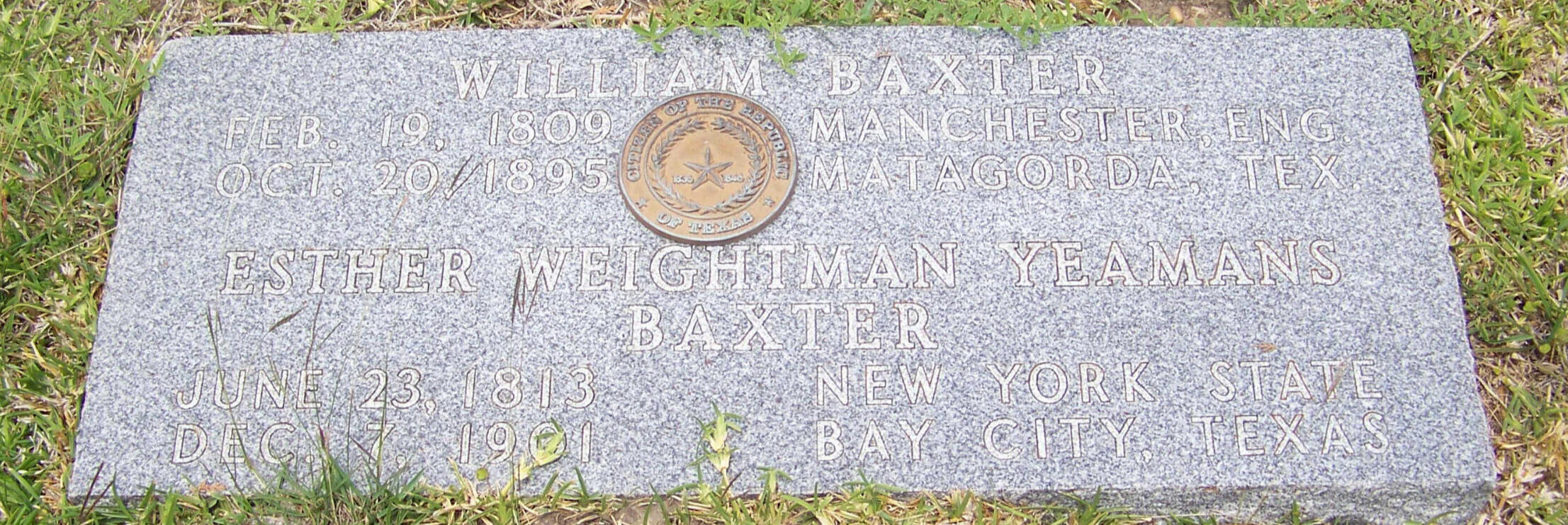

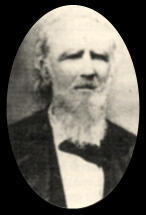





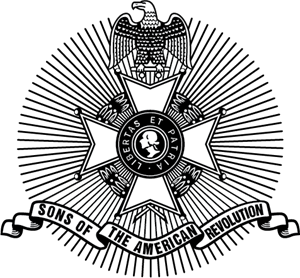





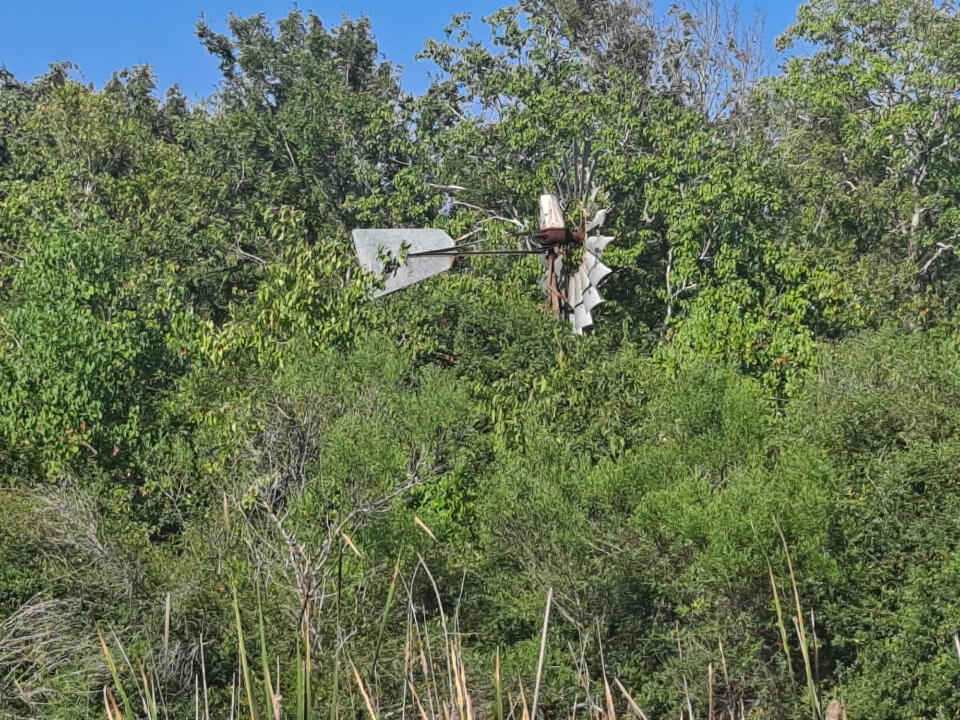

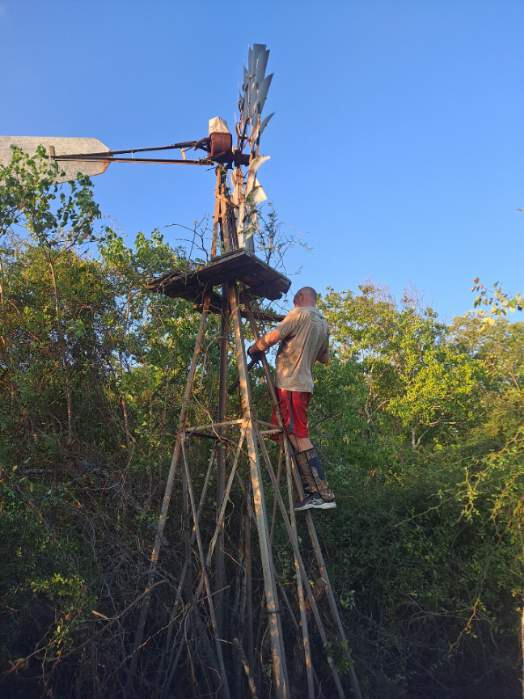
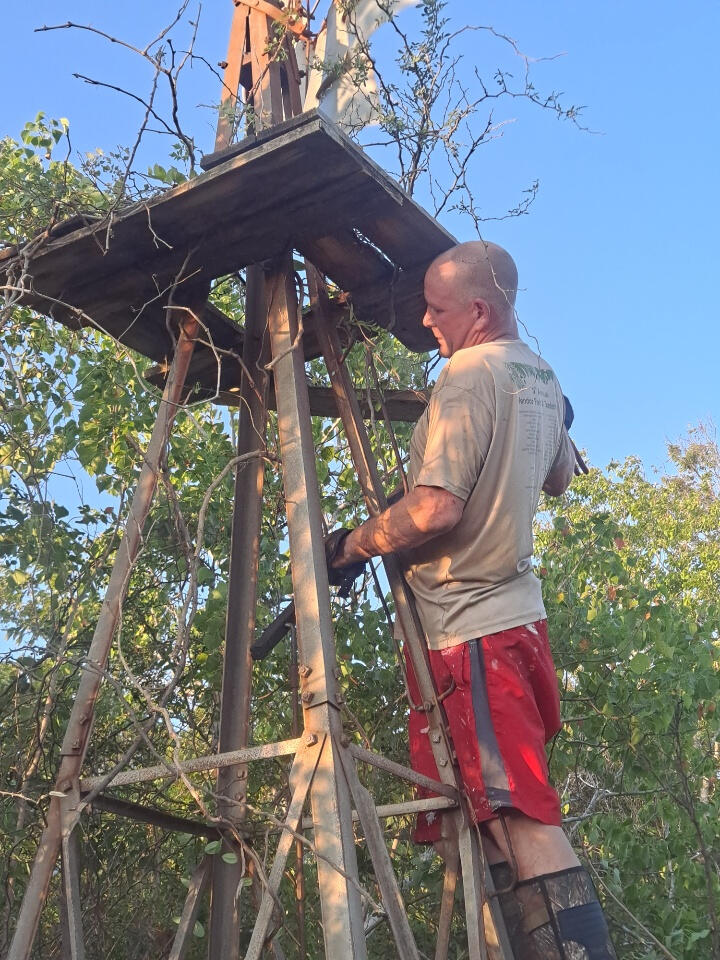
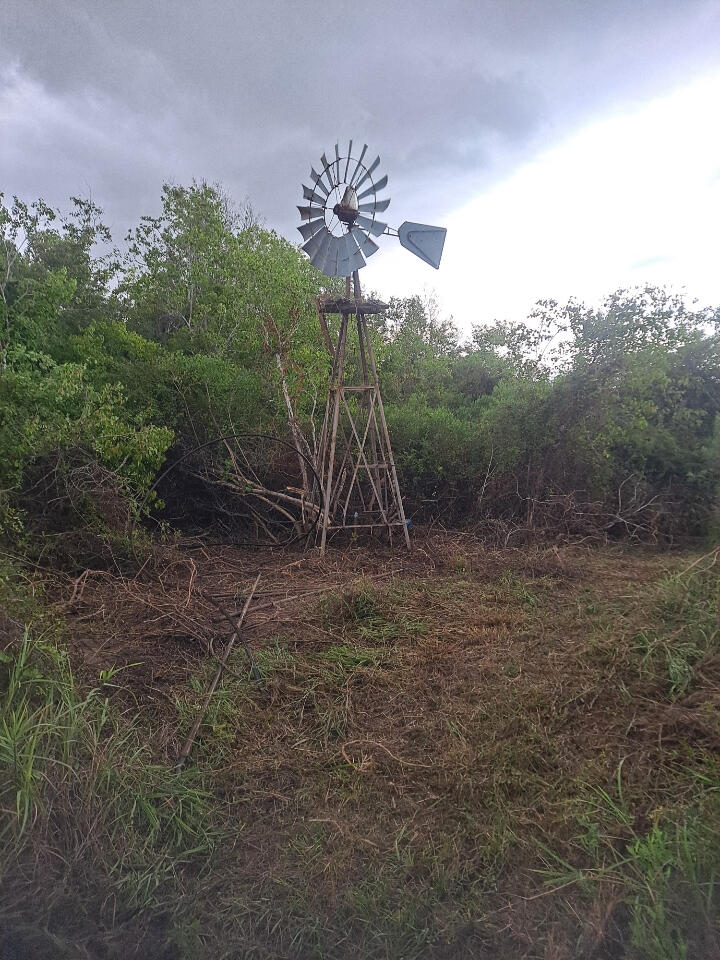












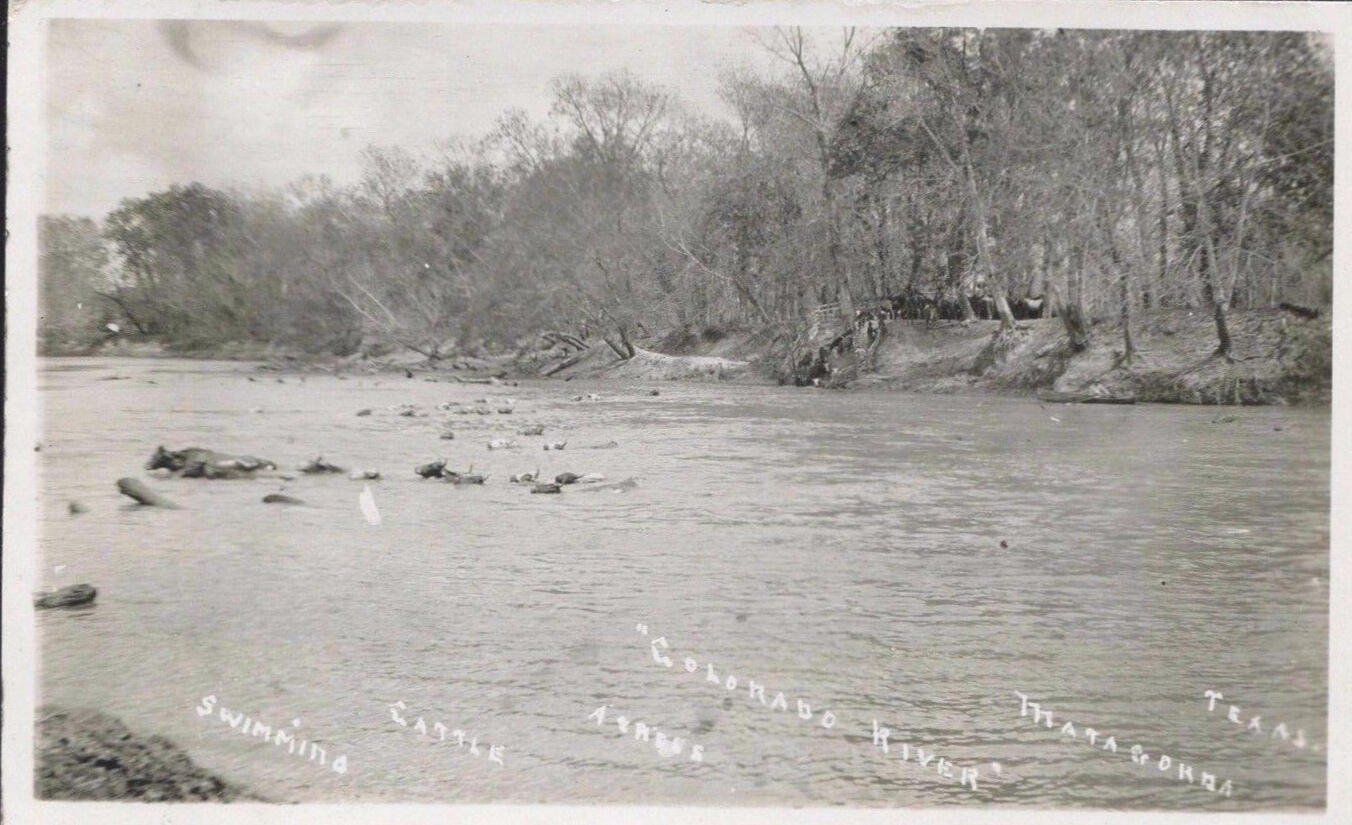

















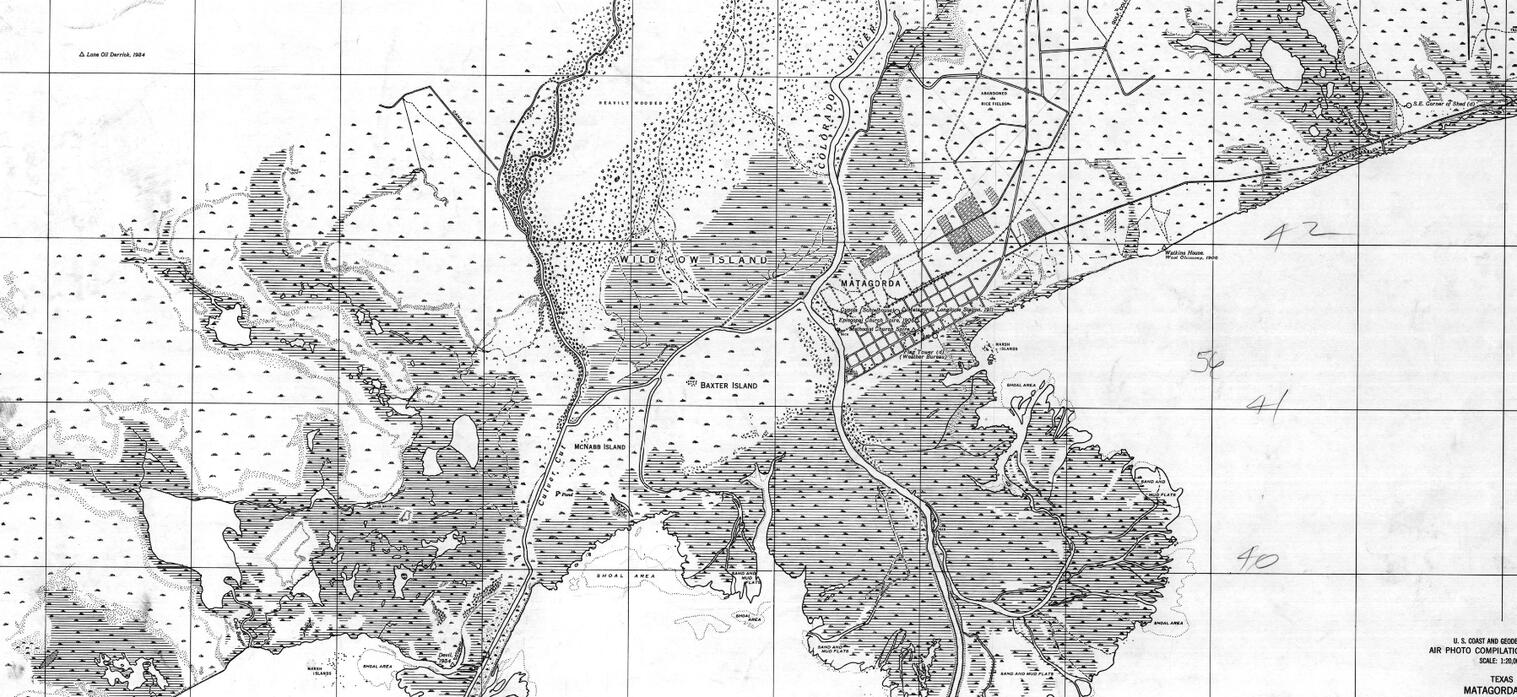

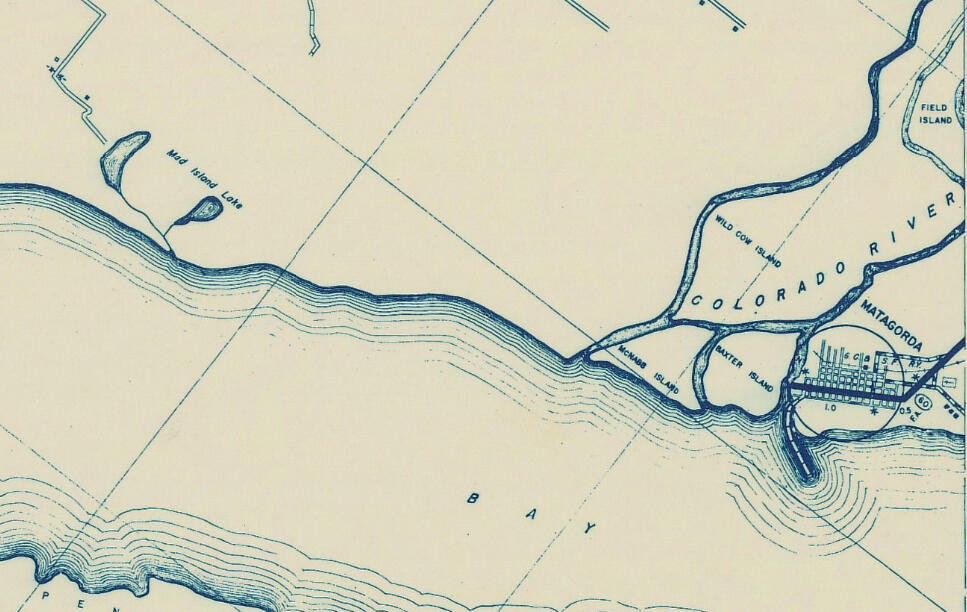


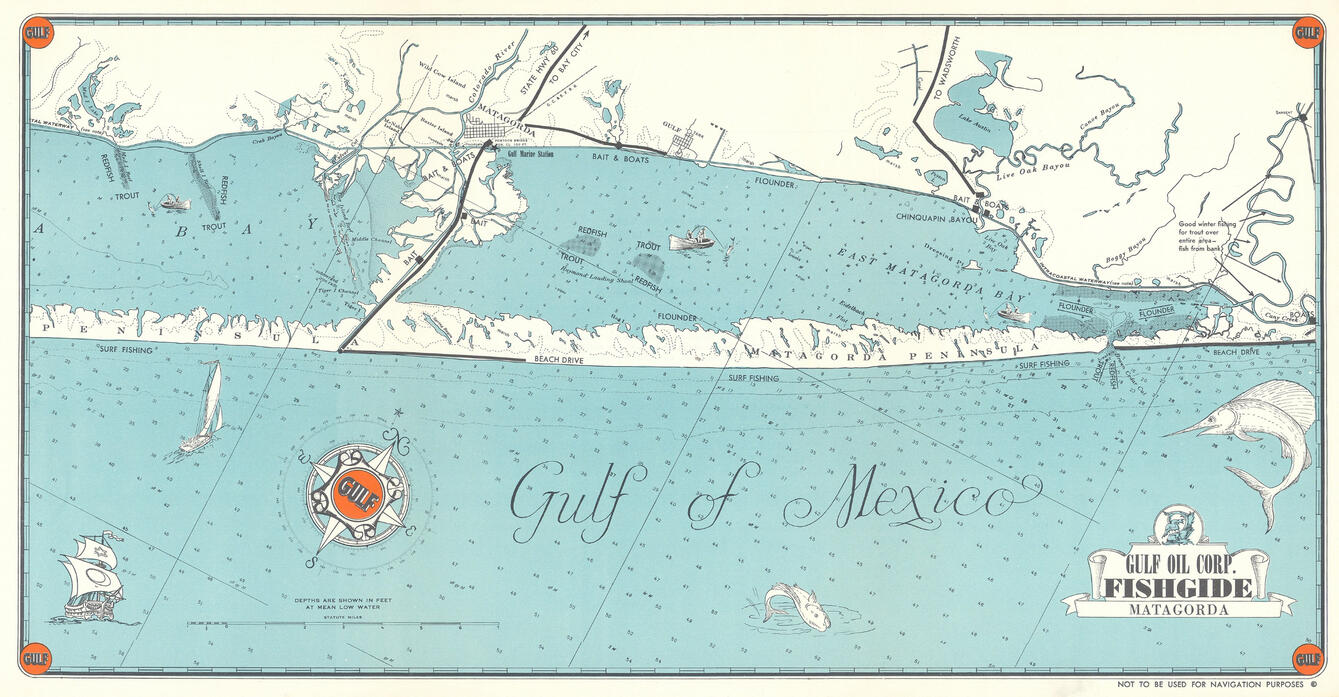
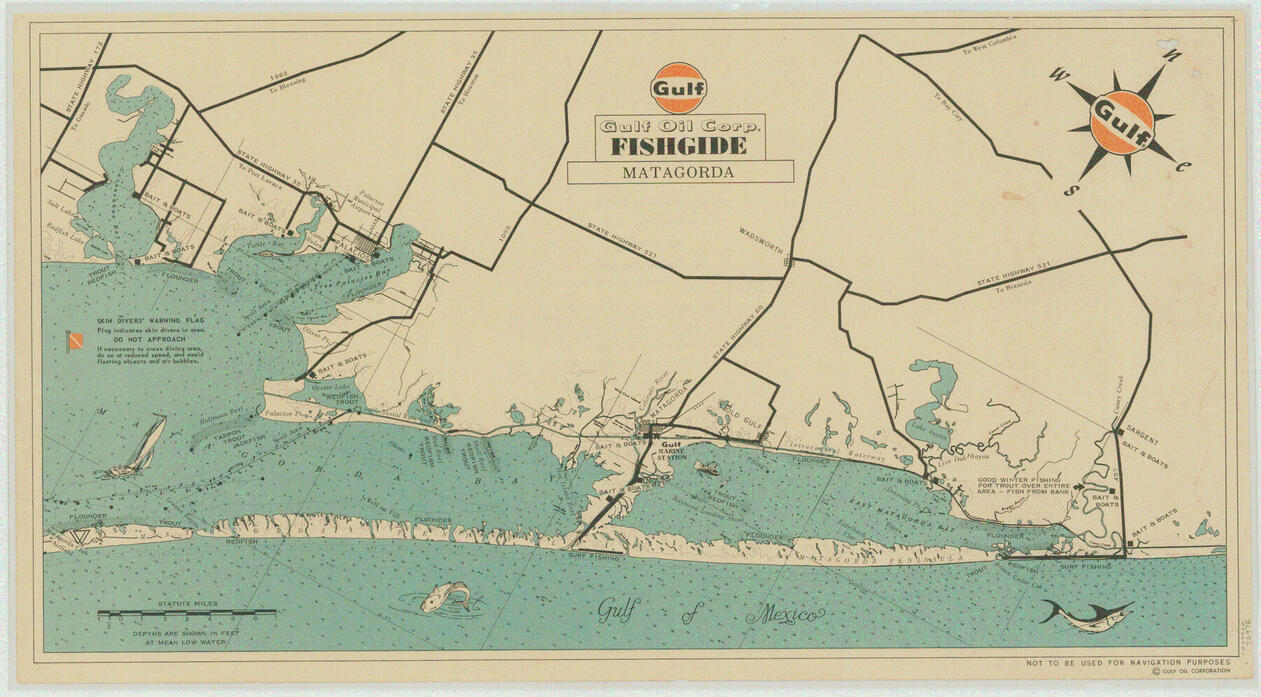
](assets/images/gallery09/89bb6348.jpg?v=d5377bf2)

